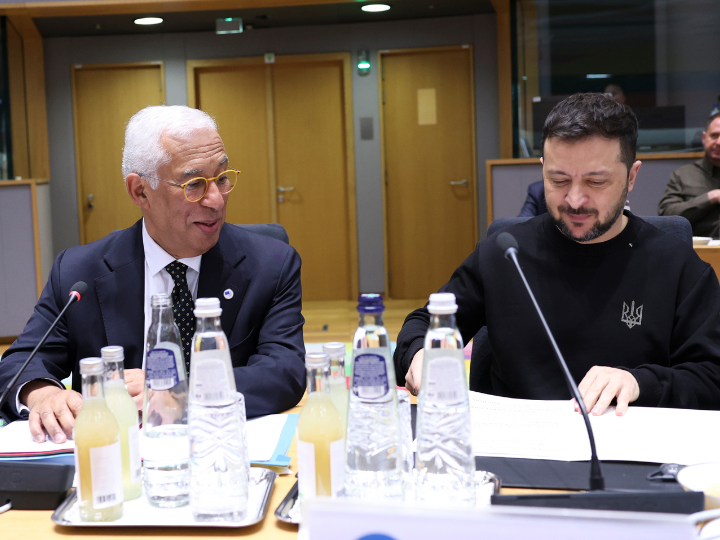by Andre Belelieu and Andrew Schwedel*
Twice already in the 21st century, we have faced “once-in-a-generation” shocks to the global economy and society: the global financial crisis and the COVID-19 pandemic. These events have been stark reminders that catastrophic shocks occur far more frequently than we assume.
Yet the model with which we deal with these shocks – with governments unilaterally bearing the risk – is fundamentally unsustainable. The world can’t afford to confront the next catastrophic shock – whether related to climate change, cybersecurity, another pandemic or something else – with the same tools or mindset.
Building greater resiliency has become a defining mandate of our time, and we need the insurance and asset management industry to lead the way in delivering on this imperative.
The COVID-19 pandemic has revealed two urgent truths about resiliency.
First, there remain significant gaps in our preparation and mitigation strategies to catastrophic perils. As a result, households, businesses and governments around the world remain ill-equipped to deal with these events.
Second, the investments necessary to build resiliency are still seen as a short-term cost to be justified rather than a cornerstone of long-term value creation.
Our ability to manage and recover from shocks has eroded over time. The global insurance protection gap – the difference between insured losses and economic losses – has climbed to more than $1 trillion globally. And this gap continues to widen along with the increase in the frequency and severity of extreme weather events, the threat of significant cyberattacks and pandemic risk. Concurrently, public debt ratios in many countries have climbed over 100% – a potential constraint on the public sector’s future ability to backstop more frequent and severe catastrophic shocks.
Companies, for their part, have not adequately anticipated and protected against high-cost perils. As a whole, businesses have underestimated the likelihood of such events, and shown limited understanding of their own exposures to them, relying on a relatively narrow set of protection tools (e.g. financial hedges) rather than a broader set of strategic and operational levers for building resiliency. And they have believed (thus far, correctly) that governments will ultimately pick up the tab, creating moral hazard and a tendency to dismiss such perils as being simply “uninsurable.”
We need an action plan for building a more resilient and sustainable world.
This model is not serving society well. We need to confront future crises on sounder footing by building new economic and social models with resilience at their core. Such an approach needs to bind different stakeholders together in closer partnership to prioritize stronger prevention and mitigation efforts, broaden the responsibilities different stakeholders assume for speeding up recovery, and elevate resiliency in corporate and investor agendas on par with near-term efficiency goals.
In partnership with the insurance and asset management industry, we have developed a framework for how stakeholders can start to unite to build this agenda. Building a More Resilient and Sustainable World: An Action Plan for the Insurance & Asset Management Industry is a collaboration between the World Economic Forum and Bain & Company with contributions from the Forum’s Insurance & Asset Management Industry Action Group (IAG), comprised of 21 insurers/asset managers operating in over 140 countries globally with collective assets under management (AuM) of $10 trillion.
First and foremost, this document is a statement of intent from the IAG members committing the industry to play a leadership role in catalysing a multi-stakeholder, multi-year resiliency dialogue. It is also an action plan identifying a shortlist of important societal challenges and a potential set of actions that insurers and asset managers might take to address them, both individually and in partnership with the public sector.
Two critical imperatives emerge:
1. A new approach to managing catastrophic risk is needed.
Imagine a new “Societal Risk Compact”, wherein companies, regulators, policymakers, insurers and investors all play a part in a more proactive approach to managing catastrophic risk. As part of the new Compact, the industry will continue to provide efficient mechanisms for risk sharing (continued innovation in catastrophe bonds, recovery funds or recapitalization efforts). Beyond risk transfer, the industry has a vitally important role to play in risk minimization, avoidance and mitigation.
Three opportunities emerge:
-Helping companies better understand and quantify the impact of and their own exposures to catastrophic risk, and prioritize and justify a broader range of mitigating investments.
-Collaborating with governments to engineer risk at a societal level, identifying and addressing vulnerabilities in critical systems (e.g. infrastructure, power, food communications, health care) to a broader range of catastrophic perils.
-Partnering with governments through new public-private partnerships aimed at enhancing risk sharing and transfer mechanisms, and improving the speed, efficiency and effectiveness of future loss remediation and public-assistance schemes.
2. Resiliency needs to rise in priority on corporate and investor agendas, rather than always taking a back seat to near-term efficiency.
In the absence of a common taxonomy for disclosures and reinforcing policy and regulatory frameworks, CEOs, shareholders and regulators often find they lack a common language to discuss and justify investments in resiliency against events that may never occur. The industry can play a leadership role in elevating resiliency.
This should take a number of forms:
-Helping to standardize public disclosures about risk exposure and investments in resiliency.
-Encouraging and informing the development of reinforcing policy and regulatory frameworks.
-Exerting clout as large corporate investors, ensuring resiliency is appropriately prioritized in strategic decision-making, capital allocation and investor conversations.
This is a monumental task. But as the COVID-19 pandemic has shown, we don’t have the luxury of avoiding the challenge.
Building a new societal risk compact and elevating resiliency on corporate agendas will be complex. It will require sustained dialogue to get right. While the problems are global, many of the solutions will be local.
And insurers and asset managers can’t achieve progress alone. Building greater resilience is by its nature a multi-stakeholder endeavour. But as the world’s foremost risk managers and risk engineers, insurers possess the expertise and knowledge to accelerate such a robust resiliency agenda. In addition, insurers and asset managers control more than $90 trillion of discretionary assets under management, affording them enormous clout as debt and equity investors.
Now is the time to lean on this expertise, this capital and the industry’s commitment to collectively build a more resilient and sustainable world.
*Head of Insurance & Asset Management, World Economic Forum and Partner, Bain & Company
**first published in: www.weforum.org




 By: N. Peter Kramer
By: N. Peter Kramer
